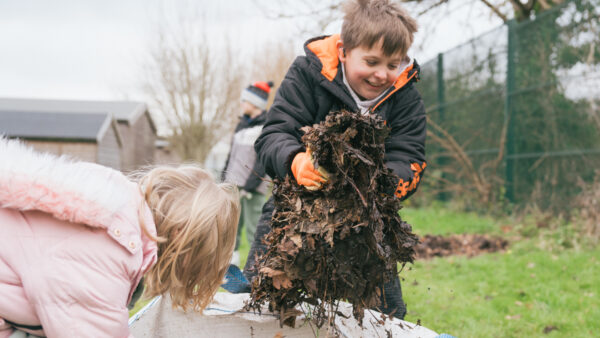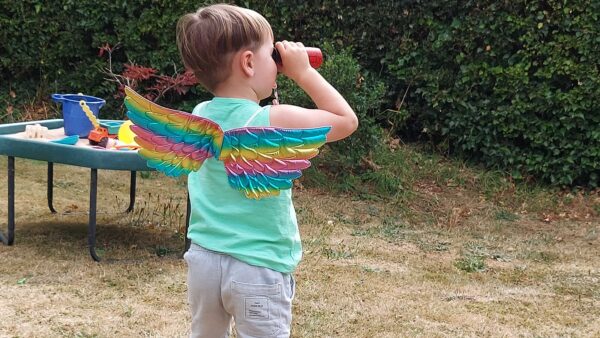The Access Chain describes access as it is experienced from a visitor’s perspective. It shows that access is a chain of events that begins with the decision to visit and ends with the visitor’s safe return home.
The Access Chain prompts you to think about what information people need at each step, by whom and how it is best delivered. Ideally, improvements to each link in the chain will be made concurrently, but alternatively it can help you work out the appropriate phasing of work. For example, there is little point in investing in pre-visit information until there is adequate information on site to support a successful visit.

Using the Access Chain to plan your information
The following sections highlight the key information issues for each link of the chain.
1. Decision to visit
Most decisions to visit a site are made at home. Many people require a good deal of information in order to plan a visit. In the absence of word of mouth recommendation, it is off-site information that people rely on to know if they can visit a site: if it has the facilities they need, if it is safe and welcoming, and if it is accessible.
Off-site, decision-to-visit information should include:
- Parking and transport information
- Location and access information for toilets, refreshments and other facilities
- Details of staffing and staff skills (for example BSL)
- If photos are included in the information, some photos should include disabled people in order to promote a positive, welcoming image.
- A description of the sorts of independent activities available
- Information on guided tours or other organised activities and events
- Opening times
Decision to visit information should be produced in large print, braille, Plain Language and audio. It is not necessary to produce all of these at once, but be prepared to quickly produce them on request, and advertise this fact on your standard information with contact details. Design your standard information using information access guidelines to minimise requests for other formats.
Decision to visit information should be promoted through your standard channels. Other channels that are worth considering, if you don’t already use them are:
- Local radio
- Leaflets in surgeries, day centres and community halls
- Direct mail to disability and other groups
2. Journey and arrival
How easy it is for people to get to a site is a major factor in determining whether they will visit or not. This sounds obvious, but this factor is often neglected in access planning. It is easy to dismiss many of these issues as outside the scope of access improvements to a site. However, the visitor experience relies on this link of the access chain being as strong as the rest.
The more choices people have in ways to reach your site, the more accessible it will be. Provide as much information as you can about routes to your site, parking and drop-off facilities and public transport options. Where information is likely to change frequently, provide contact details and links to current information.
The most accessible form of information is conversation. When visitors arrive at your site the arrival experience can be improved by:
- Ensuring staff and volunteers are on hand at entrances
- Ensuring staff and volunteers trained in disability awareness
- Training staff and volunteers in extra skills such as BSL
3. On-site experience
In some ways the on-site experience is the least important of the links in terms of accessible information. Many sites have already gone some way to improve the quality of on-site information provision. Information on site breaks down into two broad areas: getting around and understanding
The information required to get around a site varies with the size of the site
- If signs are used, ensure that they are clearly worded, indicate direction and distance, are located where they are easily seen and are not obscured by foliage or dirt.
- Provide enough information about a route to allow the visitor to make their own choice. “Unsuitable (or suitable) for wheelchairs” is not appropriate as what may suit one wheelchair user may not suit another. The increasing use of powered mobility vehicles, from three wheeled shopping scooters to all-terrain Trampers further increases the variety of routes that may be “suitable”. Where routes contain steps, rough surfaces, steep gradients or cambers, indicate these either on a map or on the signs, or both.
- Many site visits are enhanced by some degree of interpretation. Interpretation should be provided in Large Print, Braille and Plain Language versions. You may also consider making a version available in a symbol assisted language such as Widgits (www.widgit.com) for people with learning disabilities.
4. Return home
Improvements to the return link of the Access Chain are usually made by improving the journey and arrival link. That said, there are a number of extra things that can improve the visitor experience:
- Make it easy for people to give feedback on their experiences. Visitor satisfaction is probably the truest measure of whether the access improvements have worked, and can provide impetus and ideas for further improvement. Just in case you thought you could put your feet up.
- Some sites may benefit from providing information resources designed to support after-visit sessions for groups, group leaders and teachers.
- Provide information that encourages people to become involved as volunteers or as members of friends groups.
Consulting with people along the way
We recommend consulting with your intended audience to make sure your plans for accessible information best meet their needs.



